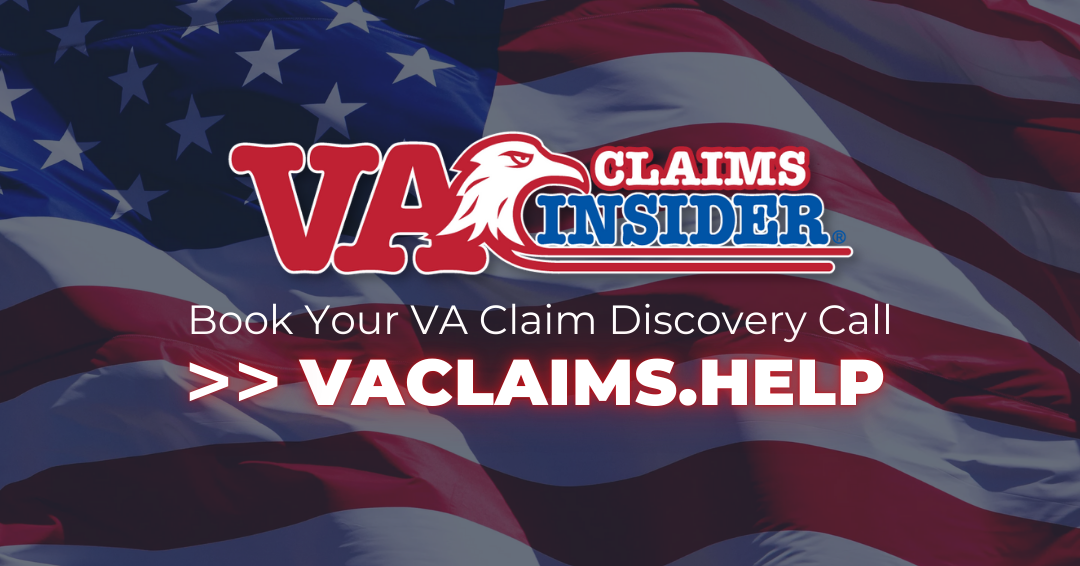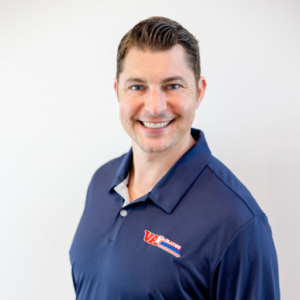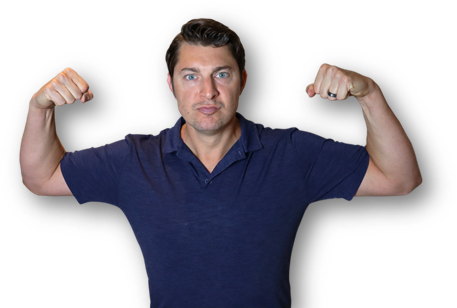Looking for Expert-Level VA Claim Answers?📱Call Us Now! 737-295-2226
Special Monthly Compensation (SMC) is an additional tax-free benefit provided by the VA to compensate veterans with severe service-connected disabilities that require extra assistance.
Among the different levels of SMC, SMC-R1 is specifically designated for veterans who require regular aid and attendance but do not need professional medical care at home.
This article from VA disability expert Brian Reese explains what SMC-R1 is, how it differs from other SMC categories, who qualifies, how to apply, and common pitfalls to avoid.
If you are a veteran struggling with daily activities due to your service-connected disabilities, understanding SMC-R1 benefits, and eligibility requirements, can help you secure the VA disability compensation you deserve.
Table of Contents
Summary of Key Points
- SMC-R1 Provides Additional Compensation for Severely Disabled Veterans: Special Monthly Compensation (SMC) is a tax-free benefit for veterans with significant service-connected disabilities. SMC-R1 is one of the highest levels of SMC and is granted to veterans who require daily aid and attendance but do not need professional medical care at home.
- Eligibility Requires a 100% VA Disability Rating and Daily Aid and Attendance: Veterans must have a service-connected disability rated at 100%, either schedularly or through Total Disability based on Individual Unemployability (TDIU). They must also require assistance with essential daily activities like bathing, dressing, eating, and maintaining personal safety.
- SMC-R1 vs. SMC-R2 – The Key Difference is the Level of Care Required: Veterans receiving SMC-R1 can rely on family members or non-professional caregivers for daily assistance. In contrast, SMC-R2 is for veterans requiring skilled medical care or nursing services at home, often for conditions like ALS or severe paralysis. Compensation for SMC-R1 typically exceeds $10,000 per month, while SMC-R2 can pay over $11,000 monthly.
- Applying for SMC-R1 Requires Medical Evidence and a VA Examination: Veterans must submit medical records proving their need for daily aid and attendance, along with VA Form 21-2680 completed by a physician. The VA typically schedules a Compensation & Pension (C&P) exam to assess the veteran’s level of care needs before issuing a final decision.
What is SMC-R1?
SMC-R1 is one of the highest levels of SMC benefits, designed for veterans who need help with daily activities due to their severe service-connected conditions.
Unlike standard VA disability compensation, SMC is awarded based on specific needs and not just a percentage-based rating.
Veterans who qualify for SMC-R1 require regular aid and attendance from another person but do not require professional medical care.
This means a spouse, family member, or caregiver can provide the assistance instead of a licensed medical professional.
What is the VA SMC-R1 Pay Rate?
In 2025, the VA SMC-R1 monthly pay rate starts at $9,559.22 for a veteran alone and can exceed $10,000.00 per month with eligible dependents.
View the 2025 VA SMC pay chart with dependents.
Examples of Veterans Who May Qualify for SMC-R1
- A veteran with severe PTSD and traumatic brain injury (TBI) who cannot manage daily hygiene, meal preparation, or medication without assistance from a spouse.
- A veteran with advanced Parkinson’s disease who experiences extreme mobility issues, needs help getting in and out of bed, dressing, and using the restroom.
- A veteran with quadriplegia who depends on a caregiver to assist with eating, using medical devices, and maintaining hygiene.
- Veterans do not need to be completely helpless to qualify for SMC-R1, but they must demonstrate the need for daily assistance with personal care and safety due to service-connected disabilities.
Eligibility Criteria and Requirements to Qualify for VA SMC-R1
To receive VA SMC-R1 disability compensation, a veteran must meet three key eligibility requirements:
#1. You Must Have a Service-Connected Disability Rated at 100%
A single disability evaluated as 100% disabling under a schedular evaluation is generally a prerequisite for entitlement to aid and attendance benefits under SMC-R1.
A veteran can also qualify with a 100% combined VA disability rating.
Alternatively, a veteran may qualify under the VA’s “Total Disability based on Individual Unemployability” (TDIU), which compensates at the 100% rate even if the total combined rating is less than 100%.
#2. You Must Require the Daily Aid and Attendance From Another Person
You must need the daily assistance from another person for basic life activities such as:
- Dressing and undressing
- Bathing and grooming
- Eating and preparing meals
- Using the restroom
- Adjusting prosthetics, orthopedic devices, or medical equipment
- Ensuring personal safety and preventing self-harm
Pro Tip: The VA requires medical evidence demonstrating that the veteran’s disabilities consistently prevent them from performing these activities independently. A letter from your private doctor explaining your functional limitations and the necessity of daily aid and attendance from another person can strengthen your case for SMC-R1.
#3. You Must First Qualify for SMC-O, OR SMC-N ½ + SMC-K
Before being eligible for SMC-R1, a veteran must already qualify for:
- SMC-O (for conditions such as blindness, amputation of both legs, or severe paralysis), or
- A combination of SMC-N ½ and SMC-K (for multiple severe disabilities, such as loss of limbs combined with loss of use of extremities).
This ensures that only the most severely disabled veterans qualify for SMC-R1.
SMC-R1 vs. SMC-R2: Table of Key Differences
SMC-R is divided into two levels: R1 and R2, based on the level of care required.
| SMC-R Level | Definition | Example of Qualifying Veteran | Monthly Pay Rate |
|---|---|---|---|
| SMC-R1 | Requires daily aid and attendance, but care can be provided by a family member or non-professional caregiver. | A veteran with severe PTSD and TBI who relies on their spouse to assist with hygiene and meals on a daily basis. | $10,000+ per month |
| SMC-R2 | Requires professional medical care or skilled nursing supervision. The VA must determine that the veteran would otherwise need hospitalization or a nursing home. | A veteran with ALS who requires licensed medical care at home every day for ventilator management and physical therapy. | $11,000+ per month |
Pro Tip: VA aid and attendance pay rates under SMC-R1 are paid in lieu of VA disability compensation pay (you don’t get both).
How to Apply for SMC-R1
If a veteran meets the SMC-R1 eligibility requirements, they can apply through the VA disability claims process.
Step #1: Gather Medical Evidence
- Obtain medical records detailing why aid and attendance is needed daily.
- Include statements from caregivers (spouses, family, or others assisting daily).
Step #2: Submit a VA Claim Online
- You can submit your claim for SMC-R1 through the VA’s online portal or by working with a VA-accredited representative.
- When submitting your claim, it’s critical to clearly state that the claim is specifically for SMC benefits due to the need for daily aid and attendance.
- Clearly indicate the SMC category you’re applying for, such as “Request for SMC-R1,” and detail how your disabilities necessitate the need for aid and attendance from another person.
Pro Tip: Veterans must complete also complete and upload the VA Form 21-2680 (Examination for Housebound Status or Permanent Need for Regular Aid and Attendance). A licensed physician must complete this form, verifying the veteran cannot function independently.
Step #3: Attend a C&P Exam
- The VA will likely order a Compensation & Pension (C&P) exam to evaluate the veteran’s disabilities.
- The examiner will assess whether the veteran’s service-connected conditions require daily aid and attendance.
Step #4: Receive a VA Claim Decision
- The VA will ultimately make a decision to approve, deny, or defer your claim for Special Monthly Compensation (SMC) and Aid & Attendance under SMC-R1.
- This rating decision is based on a review of the evidence provided, including medical records and documentation of your need for additional care.
- If approved, you will receive additional compensation corresponding to the level of care required.
- If denied, you may appeal the decision or provide further evidence to support your claim.
Common Mistakes That Lead to Denial
Many veterans unintentionally weaken their SMC-R1 claim by making the following mistakes:
- Not Requiring Daily Aid and Attendance: Your service-connected disabilities must be so severe that you require daily assistance from another person.
- Not Providing a Doctor’s Statement: The VA requires medical evidence proving daily aid and attendance is needed. Without this, the claim will likely be denied.
- Filing a Claim for SMC-R1 Without Proof of a 100% Rating: Veterans must have a 100% VA rating and already qualify for SMC-O or SMC-N ½ + K before being eligible for SMC-R1.
- Not Attending a C&P Exam: Failing to attend the exam or downplaying symptoms can result in claim denial.
- Not Including Lay Statements: Statements from family members, caregivers, or personal assistants describing daily struggles add significant credibility.
Conclusion & Wrap-Up
Veterans who qualify for SMC-R1 receive some of the highest VA disability compensation available, with pay normally exceeding $10,000 per month tax-free.
In addition, this level of compensation helps veterans remain in their homes instead of being placed in a nursing home or hospital.
If you believe you qualify for SMC-R1, but aren’t sure how to proceed, VA Claims Insider is here to help!
Our team of VA claim experts has assisted thousands of veterans in securing the VA disability benefits they deserve.
📞 Call Us Right Now for Expert-Level VA Claim Help: 737-295-2226
✔ No-Obligation VA Claim Strategy Call
✔ Ask Questions and Get Expert Answers
✔ Learn How to Increase Your VA Rating, Faster!
Want Expert-Level Help With Your VA Claim? WE GOT YOUR SIX!
How does VA Claims Insider help veterans?
We make the confusing and frustrating VA claim process EASY through our 8-step proprietary system and one-on-one coaching; we’re the VA Claim EXPERTS you can trust, and YOU are never alone in this fight against the VA!
You’ll also receive VA disability expert Brian Reese’s SEM Method Blueprint—a proven formula that has helped over 25,000 veterans win their VA disability claims faster:
Strategy + Education + Medical Evidence = VA Rating and Compensation You Deserve FASTER!
Start today and unlock an exceptional level of service you deserve for serving our country:
➡️ You’ll hear from a VA Claim Expert over email within 15 minutes of signing up today.
➡️ You’ll hear from your Veteran Coach team within 24 hours of all inquiries during normal business days/hours.
➡️ Our terms are clear and simple: If we don’t win, you don’t pay. You have nothing to lose and everything to gain.
Click the red button below to start the process of winning your VA claim right now!
Fellow Veterans: Are You Ready to WIN, SERVICE-CONNECT, and INCREASE Your VA Disability Rating FASTER? We Can Help!

- VA Claims Insider is the #1 most trusted name in VA disability claims.
- Work directly with a VA claims coach who can help lead you to VA claim victory.
- 25,000+ disabled veterans served in our membership programs since 2016.
- 30% average rating increase for veterans who complete our #1 rated Elite program.
- 4.7/5.0 average rating out of 5,500+ total reviews; over 4,500 5-star reviews.
About the Author

Brian Reese
Brian Reese is a world-renowned VA disability benefits expert and the #1 bestselling author of VA Claim Secrets and You Deserve It. Motivated by his own frustration with the VA claim process, Brian founded VA Claims Insider to help disabled veterans secure their VA disability compensation faster, regardless of their past struggles with the VA. Since 2013, he has positively impacted the lives of over 10 million military, veterans, and their families.
A former active-duty Air Force officer, Brian has extensive experience leading diverse teams in challenging international environments, including a combat tour in Afghanistan in 2011 supporting Operation ENDURING FREEDOM.
Brian is a Distinguished Graduate of Management from the United States Air Force Academy and earned his MBA from Oklahoma State University’s Spears School of Business, where he was a National Honor Scholar, ranking in the top 1% of his class.



